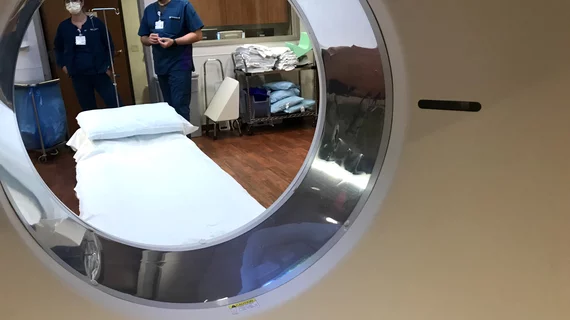Radiologists divided on which CT quality measures are most important
A new survey reflects the unique preferences of different readers, highlighting the need for more quantitative measures of quality specific to subspecialties.
Published in the Journal of the American College of Radiology, the survey responses reveal that although radiologists prioritize CT image quality metrics differently, one thing that most all of them agree on is that evidence of motion is the most important marker of quality. Outside of that, the responses suggest that image quality is perceived quite differently across the spectrum of subspecialties. As such, protocols developed to ensure quality should take these variances into consideration.
Most quality measures in CT exams focus on patients’ radiation dose, rather than things like motion, image noise, artifacts, etc. National electronic reporting standards focus mostly on dose as a measure of quality, but the impending electronic clinical quality measure (eCQM) set to be enacted by the Centers for Medicare and Medicaid Services in the coming years will also incorporate image noise.
While this is an important step toward standardizing image quality guidelines, it doesn’t go far enough, authors of the new paper suggested.
“There is more to imaging performance than radiation dose and noise in air. There are many quantitative image quality features that are relevant and thus should be informed specific to differing radiology subspecialties,” corresponding author Dustin A. Gress, MS, with American College of Radiology, and colleagues noted. “Quantitative task- or specialty-specific image quality features are necessary not only for interpretive radiology but also AI-based image analyses, assuring both clinical image quality and algorithm performance.”
To get a better idea of providers’ perceptions on the subject, researchers surveyed a group of 81 subspecialty radiologists and medical physicists in volunteer leadership roles in the American College of Radiology and Radiological Society of North America. The survey touched on ten different measures of image quality—axial sharpness, blooming, contrast, longitudinal sharpness, low contrast axial sharpness, metal artifact, motion, noise magnitude, noise texture, and streaking.
The majority of subspecialists (excluding musculoskeletal) agreed that motion, or lack thereof, is the most important feature. Most also agreed that axial sharpness and contrast are moderately important, while there were stark differences in opinions on noise magnitude.
Cardiac specialists rated blooming as highly important, and musculoskeletal providers reported noise texture, longitudinal sharpness and the presence of metal artifacts as strong indicators of quality. Medical physicists rated noise magnitude as a top priority, followed by streaking.
Pediatric and abdominal radiologists were the only subspecialists who agreed with physicists that noise magnitude is a top concern for image quality, prompting the authors to question the utility of CMS' pending policies.
“The eCQM is a national policy concern, as this study demonstrates intersubspecialty disagreement on the importance of noise magnitude,” the group wrote. “Diverting resources in an effort to comply with the measure may have unintended consequences on patient care, especially when radiology practices in the US are struggling to handle a workforce shortage.”
The group suggested that policies related to quality could benefit from a larger library of descriptors individualized across subspecialties that are not dependent on radiation dose and noise magnitude alone.
The study abstract is available here.

